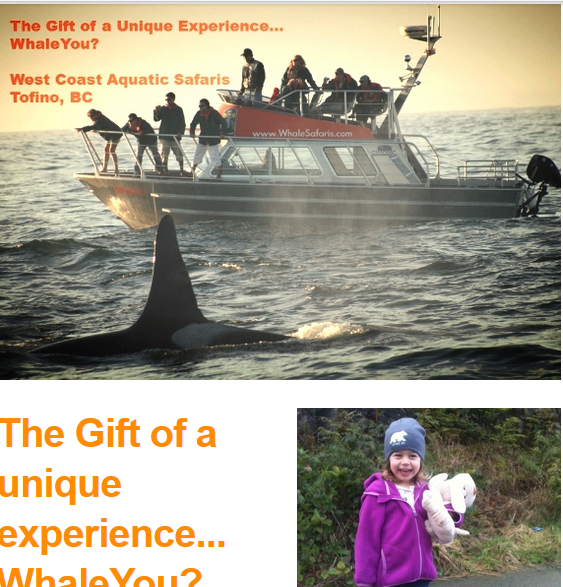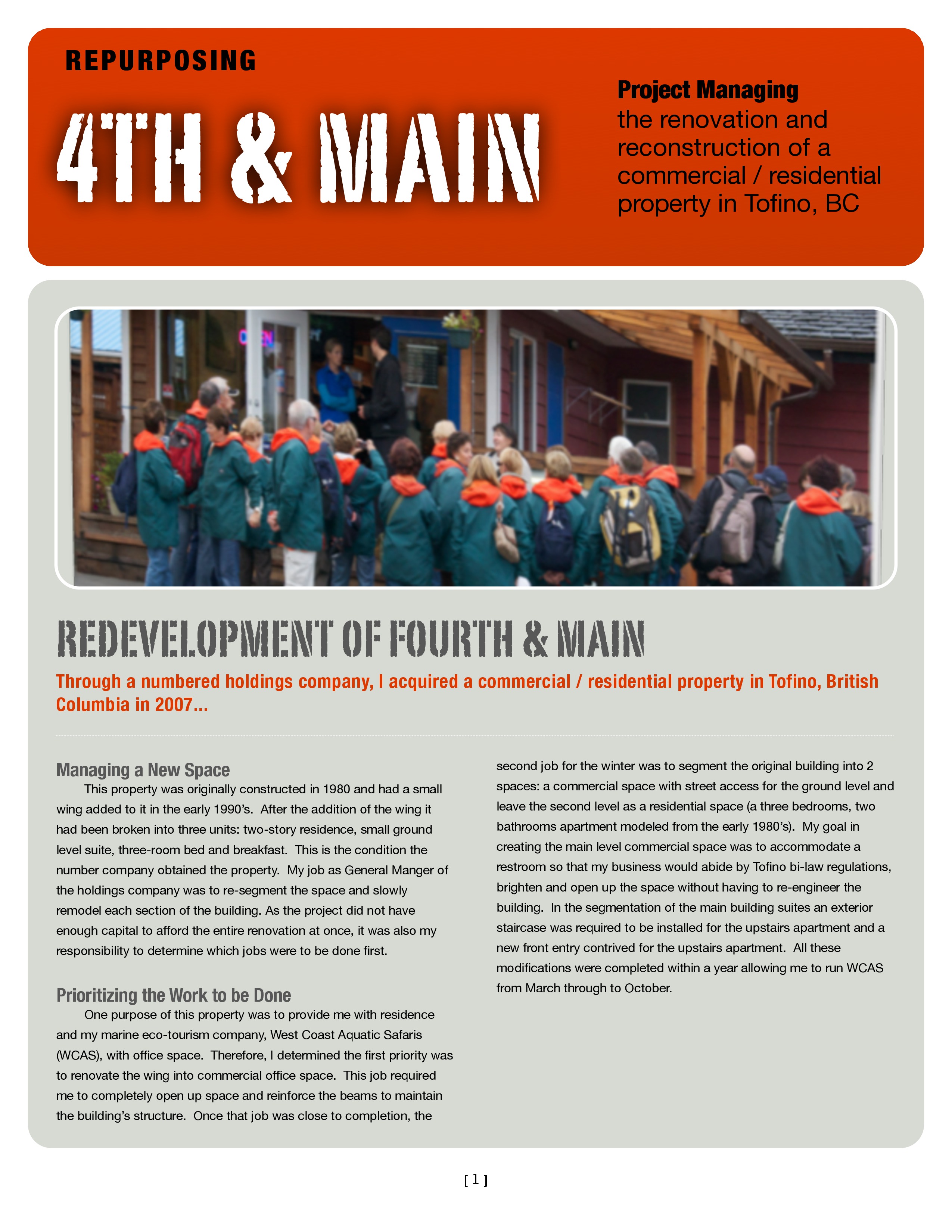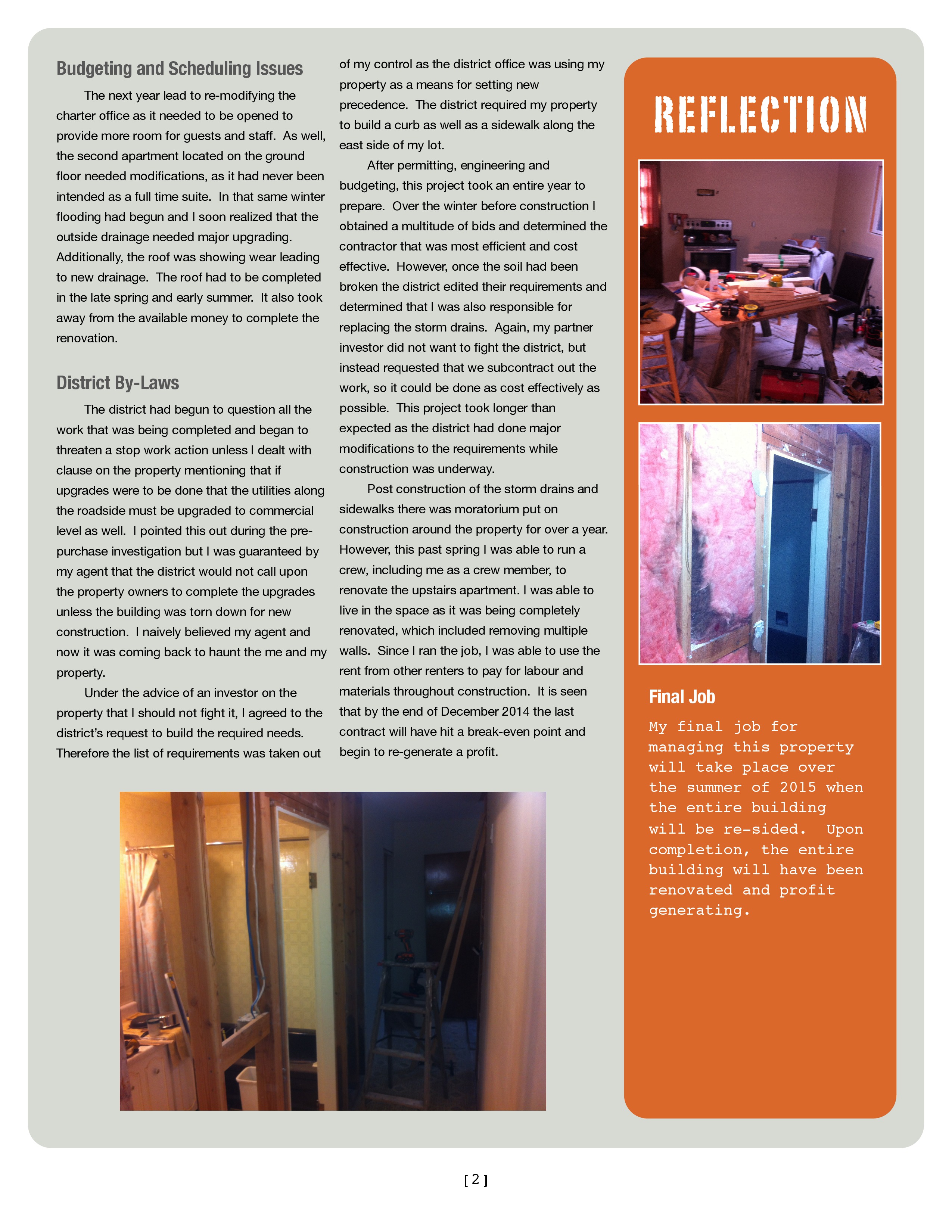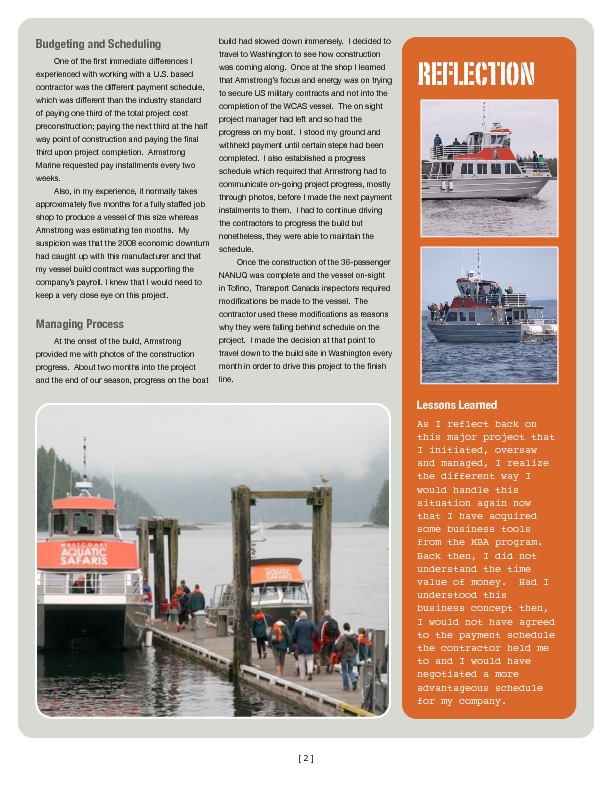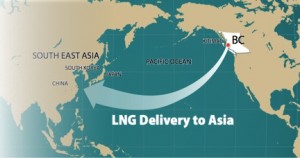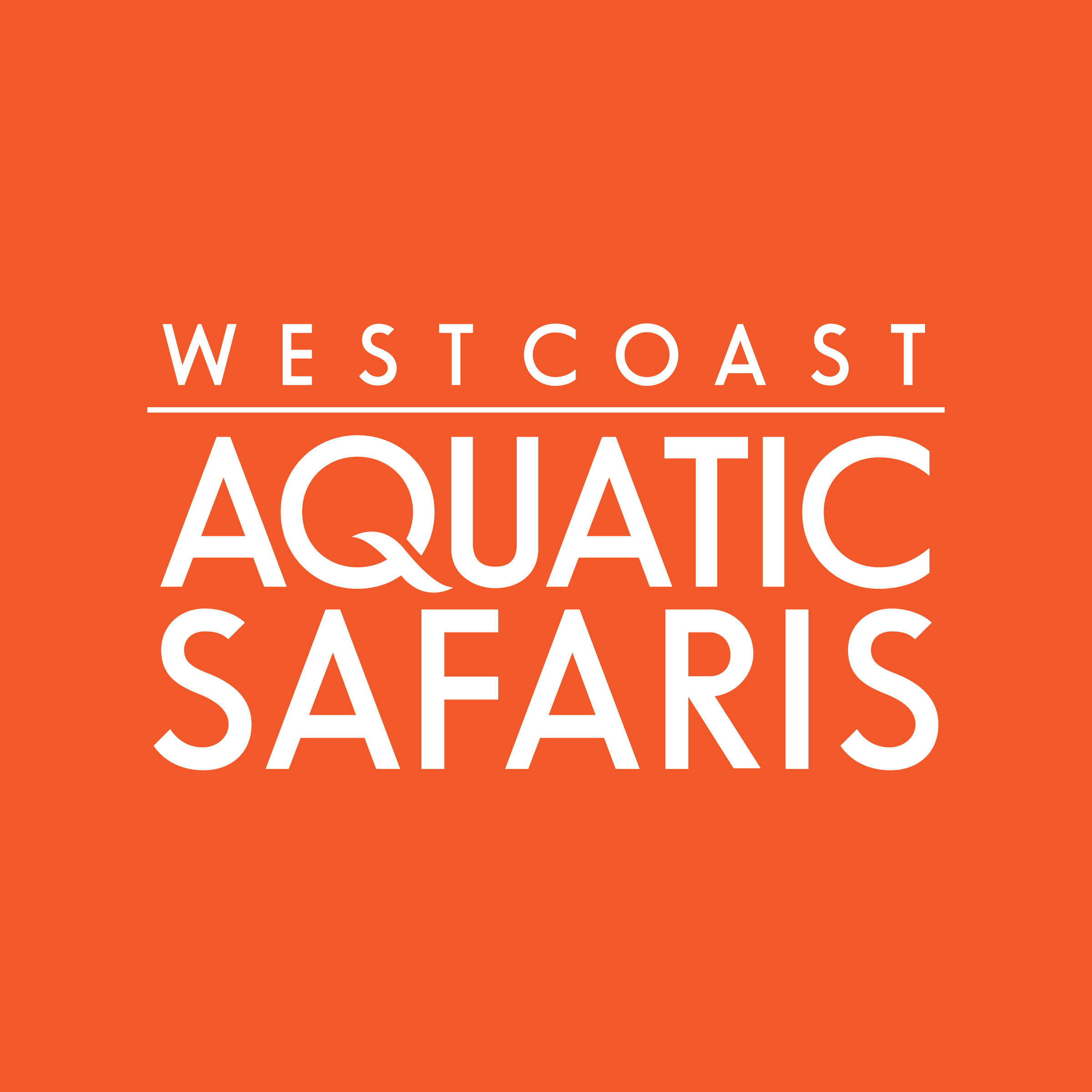 The primary reason I chose to take this course was because of the group project. As the founder of West Coast Aquatic Safaris (WCAS), a small eco-tourism company in Tofino, BC, I was pumped at the opportunity to have a group of my fellow MBA-ers develop a strategic e-marketing plan for my business. I knew the ideas brought to the table would be implemented post-course and that my General Manager, Brent Baker, would be appreciative of our group’s effort.
The primary reason I chose to take this course was because of the group project. As the founder of West Coast Aquatic Safaris (WCAS), a small eco-tourism company in Tofino, BC, I was pumped at the opportunity to have a group of my fellow MBA-ers develop a strategic e-marketing plan for my business. I knew the ideas brought to the table would be implemented post-course and that my General Manager, Brent Baker, would be appreciative of our group’s effort.
WCAS Presentation Layout
The online marketing presentation was given to Brent via conference call as he is located in Tofino. Before the scheduled meeting, we emailed Brent the final slide deck so he could follow the presentation along as each group member spoke to its various sections (see Exhibit 1).
I have delivered presentations via conference call before but this experience differed in that there were multiple people speaking to the slide deck and I was concerned the presentation would not be as concise or impactful. That being said, by enabling all six group members to speak, we were able to drill deeper into the project and shared a far more comprehensive plan with Brent than I initially anticipated. During the presentation, it was very evident by Brent’s comments and questions that he was engaged with the content.
Our group decided to present each section of the slide deck using a similar structure as the paper, which was:
- Proposal
- Implementation
- Outcomes
- Recommendations
Doing this six times and adding an introduction and conclusion took some time, but it allowed Brent to understand the group’s thinking and contemplate suggestions for moving forward with WCAS’ eMarketing strategy.
Email Marketing
I lead the email marketing section of the project. From what I know, it is very difficult to build much traction with email marketing in a short period of time. Email marketing also poses other challenges compared to social media marketing or Google Adword campaigning. Despite this, our group was further ahead than others with our email marketing strategy as WCAS already had an email contact list. When I first received the mailing list, Brent noted that the majority of individuals were past WCAS guests. A mailing list of past guests is not ideal as most people do not visit Tofino yearly to go on eco-tours. That said, some do visit annually and also go on an eco-tour each time and some of those names were on the list as well. Therefore, I began my section of the presentation stating that I felt we had lesser success, as all these people have already traveled with WCAS previously and that many of them do not know when or if they will ever return to Tofino. This was followed with the idea to try and build a newsletter following – perhaps on local wildlife and/or Tofino happenings. Also, I suggested to individually encourage people who are regularly engaging in WCAS social media to follow the newsletter and have groups or associations that work with WCAS, such as the Accessibility Wilderness Society, to encourage their members to follow the newsletter. This way people who receive the email will be wanting the information.
A / B Testing of Email Marketing
I explained to Brent that much of online marketing is A / B Testing, also known as Beta Testing and that I did two rounds of it – WhaleYou and Test2 (see Exhibit 2 and Exhibit 3). However, before setting up the tests, I needed to eliminate some variables. In this case I eliminated time of day and day of the week. I quickly, explained from my research a few days seemed to be optimally, so I choose Thursday and between 9:00 am and 12:00 pm seemed to be optimal.
Given that most people on the email list are from Canada, I chose to use Thursday at 9:30 am PST. Also, I decided to send all emails from info@whalesafaris.com. He seemed pleased with those decisions allowing me to continue. I reflected later in my section of the presentation and asked Brent if I could try some Bata Testing closer to Christmas on the sender of the email with part of the group getting it from info and other from a specific staff member, perhaps himself. He agreed that it would be a good idea, as it could make the email seem more personable.
After beginning to engage Brent, I asked him what other information does the person who receives the email have to allow them to make the decision on whether or not to open the email. Thankfully, he stated the subject line was only other information available to the person who received the email. I agreed and then laid out the first level of testing we did.
- WhaleYou A / B Testing compared the subject lines of the emails: “adventurous” vs “gift”
- Test2 A / B Testing compared the subject lines of the emails: “from West Coast Aquatic Safaris” or “for your family”
Conclusion of the Email Marketing
I asked Ba to guess what he thought would come out on top for each of the tests. His intuition was correct – “adventurous” for WhaleYou and “for your family” for Test2. Having Brent guess in advance was a tactic to engage him during the presentation.
Finally, because no one clicked on the “Book Now” button and that it would be challenging to compare the results between the two Bata tests – the image quality. However, my group and I determined that the Test2 email format looked better when opened. In general, we would suggest to use one collage image rather than more than one and to show an image of people, preferably families, having fun and smiling. We guessed that the “Book Now” button was not clicked for two major reasons:
- The tests were run too far in advance of Christmas. We advised Brent to try the next test on December 11th or 18th
- The “Book Now” button was on the bottom of the email. We suggested moving it to the top.
Conclusion of the WCAS Presentation
I concluded the presentation by re-stating the group’s recommendations for WCAS. We thanked Brent for his time and reinforced the fact that if he had questions post meeting, that he was welcome to email any of us. I would imagine once he has read the report he may have some more questions for us.
At the end of the experience, I was quite humbled by the level of professionalism and effort that the members of my group put forth towards the project as it had a direct impact on me. Though everyone knew that the presentation to Brent was not for grading in the course, the team put in full effort because it was my company and they wanted to help me personally. It was refreshing to work on a group assignment that was a real project and not just theoretical – our group was essentially an e-marketing team working with its client, WCAS. I am keen to work with Brent to implement the recommendations made through this project and am excited to see the results in the next tour season.
Appendices
Exhibit 1 – WCAS eMarketing Presentation
Exhibit 2 – WhaleYou Email

